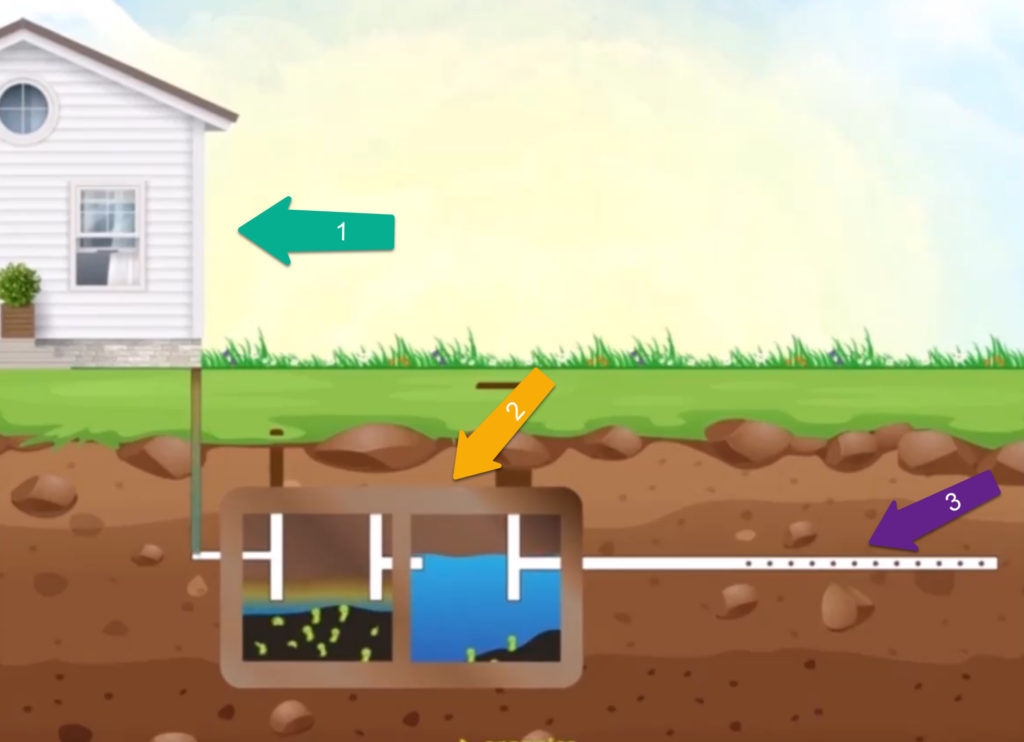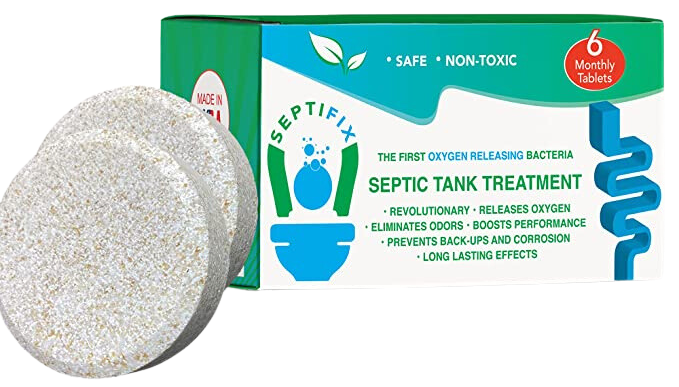Regular maintenance, including septic tank pumping, is necessary for proper functioning, preventing costly repairs and environmental issues.
However, there is an innovative alternative to traditional septic tank pumping called SeptiFix.
Typically, if you are NOT using SeptiFix, it’s recommended to pump your system every 1-3 years. However, If you use SeptiFix it’s recommended to pump your system every 10-15 years.
Pumping your system can cost $300-$700.
Also, this is another important thing that most septic owners don’t know. Pumping your septic system only cleans your septic tank, it does NOT clean out your “Drain Field” pipes which is really important.
If (or should I say when) your Drain Field eventually get’s clogged due to lack of cleaning, it can cost you, on average, $10,000+ to replace it due to it being buried underground.
SeptiFix tablets is one of the only products available to prevent this from happening. It guarantees that it will clean out your entire septic system, including your drain field, which traditional septic pumping does not do.
It also will eliminate any odors and has a money-back guarantee even if you have already used the entire package.
Understanding Your Septic System (Very Important)
Contents

So what I found interesting is that most people don’t know how a septic system works. Many people think a septic tank is just a tank; once it gets full, you must pay someone to empty it.
This is incorrect!
As you can see in the image above, your septic system functions in a 3 step process:
- You flush the toilet.
- Everything you flush goes into the septic tank.
- Your septic tank separates the solids and releases the liquid into what’s called the “Drain Field” which is the soil in your yard.
The live bacteria in your septic tank will break down the solids. If however, you have not been adding bacteria back into your septic system as preventative maintenance, that’s when problems start.
A septic system consists of two main components: a septic tank and a drain field. The septic tank is an underground chamber, typically made of concrete, fiberglass, or polyethylene.
It receives wastewater from the house, separates solids from liquids, and starts the decomposition process. The liquid effluent then moves to the drain field, where it is treated further and absorbed into the soil.
So your septic system is self-sustaining and doesn’t require you to pump it to maintain it. It only needs to be pumped if you flushed something you were not supposed to or failed to do the proper maintenance.
However, the EPA recommends you get it inspected every 1-3 years by a master plumber or a septic contractor to ensure your septic system is in good condition.
Do NOT hire a septic pumper to do this job; in some states, like Florida, septic inspections must be done by a Master Plumber or Septic Contactor.
The Importance of Septic Tank Maintenance
Over time, solid waste accumulates in the septic tank, forming a sludge layer at the bottom and scum at the top.
Solid waste can overflow into the drain field when the tank becomes too full due to not having enough live bacteria, causing blockages, system failure, and contamination of nearby water sources.
Regular maintenance is essential for adequately functioning of the septic system and preventing costly repairs.
Why You Should Use SeptiFix

SeptiFix is an innovative septic tank maintenance solution designed to address the challenges of traditional pumping.
Traditional pumping messes with the bacteria ecosystem of your septic tank, which is required for your septic system to break down solids.
Also, as mentioned before, the most important thing is that pumping your septic tank only clears your septic tank and NOT your drain field.
The drain field is untouched due to it being buried underground, and over time, it will get clogged, and it’s very expensive to replace (again, it costs, on average, over $10,000+ to replace).
SeptiFix is one of the only septic tank and drain field cleaners the U.S. government utilizes due to its effectiveness.
With SeptiFix, you won’t have that issue. It takes care of everything, including removing all solids and extending the life of your septic tank.
You can flush the tablets or put them directly in your riser (like shown below), and they will go directly into your septic tank and work their magic!
Remember, your septic system automatically gets rid of liquids but not solids. The reason why people pump their septic system is to get rid of solid waste.
However, with SeptiFix, you no longer need to pump your system every 2-3 years to remove solid waste from your septic tank.
It will automatically liquefy all solids from your tank within 3-weeks. It’s 100% safe and does no damage to the septic system.
SeptiFix reduces the need for frequent septic tank pumping by enhancing the waste decomposition process and preventing the accumulation of solids in the tank.
So instead of pumping every 2-3 years, with SeptiFix, it’s recommended to pump every 10-15 years, but it’s not required to do so!
By incorporating SeptiFix into your septic system, you can achieve the following:
- Improved decomposition: SeptiFix enhances the bacterial breakdown of waste, reducing the amount of solid material in the tank.
- Reduced maintenance frequency: By preventing the buildup of solids, SeptiFix reduces the need for frequent septic tank pumping.
- Cost savings: With fewer pumping appointments, you can save on maintenance costs in the long run.
- Environmental benefits: SeptiFix’s efficient waste processing reduces the risk of drain field contamination and preserves the surrounding environment.
Signs Your Septic System Needs Attention
Whether you choose traditional pumping or SeptiFix, it’s vital to be aware of signs that your septic system needs maintenance:
- Slow drains: If water drains slowly from sinks, showers, or toilets, it may indicate that the septic tank is full.
- Foul odors: Strong sewage smells around the tank or drain field can signal that the tank needs maintenance.
- Lush vegetation: Overly green or spongy grass in the drain field area can indicate an overflowing septic tank.
- Sewage backup: If sewage starts to back up into your home, this is a clear indication that the septic system needs immediate attention.
Septic tank maintenance is crucial for your septic system’s proper functioning and longevity. SeptiFix presents a revolutionary alternative to traditional septic tank pumping, offering improved waste decomposition, reduced maintenance frequency, and cost savings.

I’m Tim Robberts, a seasoned wastewater treatment & septic system expert with over 40 years of experience in the field. My career began as a septic tank installer, and I quickly gained a reputation for my attention to detail and commitment to excellence. Over the years, I’ve honed my skills in designing, installing, and maintaining septic systems for residential and commercial properties.